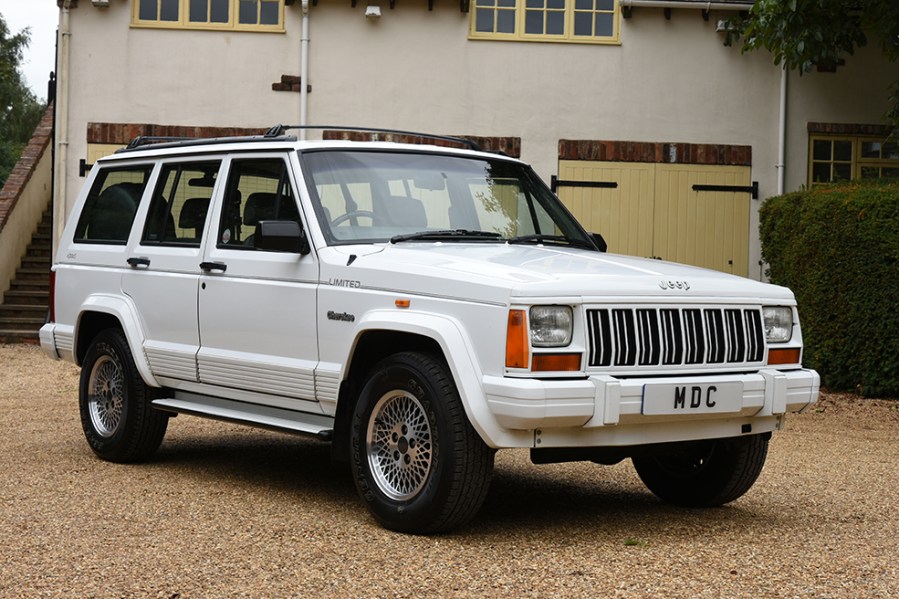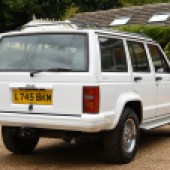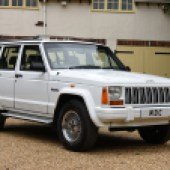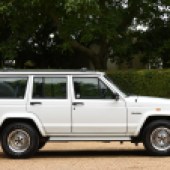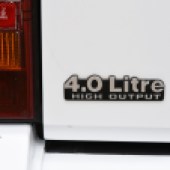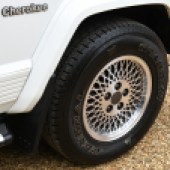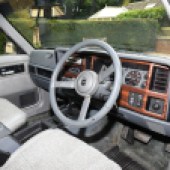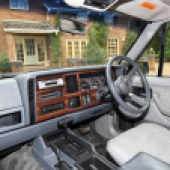If you really need a robust, reasonably comfortable yet highly capable off-roader, the Jeep Cherokee could be the answer. Here’s what to look for
It’s fair to say that despite sharing a name with what was effectively a two-door Grand Wagoneer back in the 1970s, the Cherokee ‘XJ’ was a radically new vehicle for Jeep in 1984. Developed under AMC with Renault, the compact SUV had revolutionary design features for a car of this class.
While other American manufacturers were rushing out rebodied pickups, AMC’s Jeep introduced the Cherokee XJ with a unibody construction and well-damped suspension that offered unrivalled on-road performance while maintaining most of the off-road ability for which the company was famous.
Development for a replacement began immediately but would ultimately become the Grand Cherokee ‘ZJ’ in 1993. Offering an upmarket option to the Cherokee, which remained on with improvements, would prove to be a marketing masterstroke. They could hardly sell enough and the competition scrambled to catch up – including Land Rover.
Jeep had been importing the Cherokee to the UK in limited numbers and in left-hand drive since the beginning, but it was in the 1990s that right-hand drive examples of both the XJ and ZJ began streaming into the UK market in much higher volumes. First came the XJ Cherokee, in 1993, through 80 dealerships, followed by the Grand Cherokee in 1996.
These were always highly equipped vehicles, especially in the UK where the value prospect was a big part of their market entry strategy. The 1993 UK-spec Cherokee Limited undercut rivals like the Isuzu Trooper and the Land Rover Discovery, while offering greater levels of standard equipment. You got power steering, alloy wheels, anti-lock brakes, remote central locking, six speakers, air conditioning, cruise control and an automatic gearbox all for free.
Electric everything? Of course: all four windows, the door mirrors, the front seats, and naturally the aerial for that impressive stereo. Metallic paint was a cheap option, and even leather seats were a very reasonable £1000.
As time went on, the level of standard equipment quietly went down, with automatic gearboxes becoming optional for example. The cheaper Sport model became the natural base spec, losing standard equipment like electric seats, cruise control and colour-coded bumpers. The Orvis was introduced later, too, and would become the range-topping specification for both the Cherokee and Grand Cherokee above the now mid-range Limited – but with there being little more from Chrysler’s big pot of goodies to add, it was mostly just an extended interior leather pack and a showering of Orvis badges.
Despite the class-leading on-road performance of the Cherokee range, the Sport moniker was a stretch even for the lighter Cherokee XJ let alone the Grand Cherokee, so the base spec model for the bigger ZJ was the Laredo. These models did without leather seats, automatic gearbox, cruise control and quite so much electronic control but all the options were still available to order.
The upshot is that almost any Jeep Cherokee, Grand or otherwise, will be highly specified. That said, many find the more modestly equipped models appealing in themselves, particularly those with the five-speed manual gearbox.

Bodywork
Thanks to being the upmarket model, the Grand Cherokees tend to be spared at least some of the working abuse and dirt that the Cherokees are subject to and so their bodywork is generally in better condition these days.
There are few special places to look for rust on either model, so simply look at the usual places at the door bottoms and sills. If a Jeep is going to be rusty in a big way it’s likely to be underneath, on the chassis rails. If the frame has been subject to an unusual amount of salt, mud and refusals to wash it, then there can be structural issues to probably walk away from.
Engines
Early Cherokees were fitted with AMC’s 2.5-litre four-cylinder petrol with the option of a larger 2.8-litre V6 or a 2.1-litre turbodiesel unit from Renault. Most of the pre-1987 petrol models were the smaller 2.5-litre unit that has been criticised as underpowered, although even in its very earliest, pre-injection forms it made a half-decent 105bhp, and 132lb.ft of torque at 2800rpm. This is about on par with the French diesel, only with 20 more bhp.
Most say that the engine to go for is the 4-litre straight-six petrol unit, which was made available from 1987 right through to the 2000s. These are inherently strong engines that have demonstrated great feats of reliability and endurance, although there are still things to watch for. Those made before 1990 are generally referred to as Renix engines, after their fuel injection system, and can suffer from troublesome wiring harnesses and wonky sensors that can be difficult to diagnose.
The later iteration of the 4-litre petrol unit featured Chrysler fuel injection and is generally referred to as the high-output engine, because of its hike in power from around 175bhp to 190bhp. Torque remained roughly the same at 225lb.ft but at a significantly higher peak. This engine saw service from 1991 and proved to be exceptionally reliable, while its revised electronics were easier to diagnose when issues did crop up.
Many UK-supplied Jeeps featured the VM diesel as soon as it was released in 1994, primarily for its superior fuel economy – it can return a good 30mpg on a run while the 4-litre petrol will struggle to hit 20mpg. However, there are reliability issues. The biggest is with the head gasket, which is of an unusual design in being comprised of four parts – one for each cylinder. Be very careful to inspect the usual signs of head gasket failure, as these are now getting to the point of age-related failure and they haven’t proved very strong anyway. A new one-piece item is an available upgrade and ideally should have been done already.
Also keep your eyes open for blue smoke with heavy applications of throttle, suggesting a blown turbocharger. Only producing 114bhp from new, these diesel Jeeps aren’t rocket-ships but should still provide a moderate shove, so if it doesn’t then be wary. Replacing the turbo on these engines is especially tricky and can quickly stack up the labour hours.
The final big thing for the VM diesels is the starter motor. Pay close attention to how cleanly it spins over and if there is any suggestion of grinding or inconsistency be prepared to walk away. There are two starter motors available for this engine (with nine and 11 teeth) and it’s crucial that the correct one is fitted, as the wrong ones will eventually break and can leave the starter ring in the flywheel.
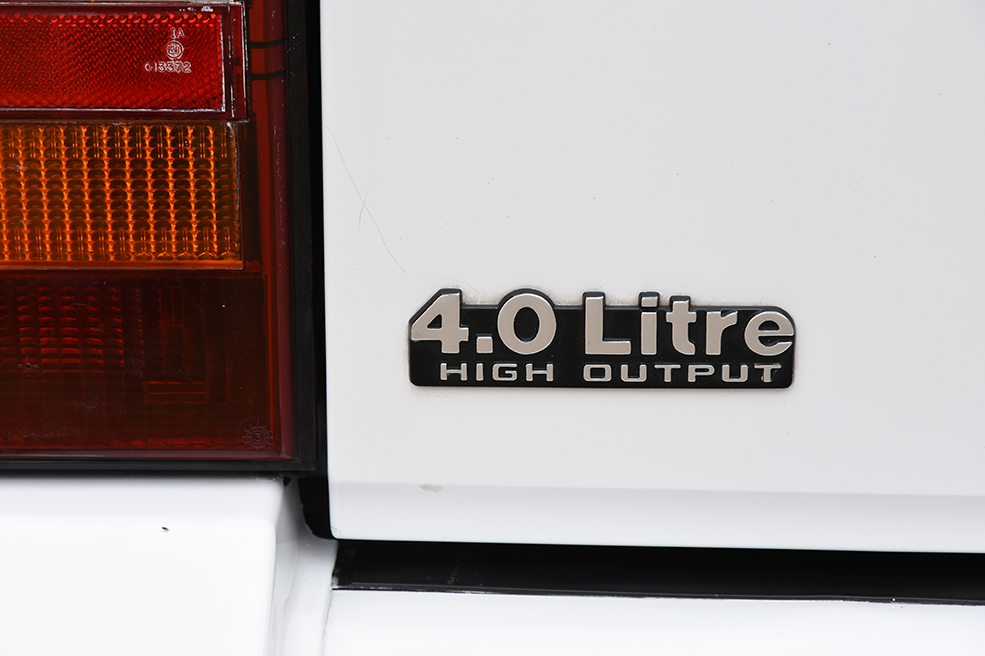
On all Jeeps, regardless of engine, you should get underneath for a good look at the various components that might cost you money. Oil leaks are quite common but generally easy to fix. The rear main seal and sump gasket, for example, can be replaced without removing the gearbox, while the valve cover gasket is another that often leaks but isn’t too troublesome to replace. Strangely enough the oil filter gasket can be a tricky one to replace, owing to awkward access, so plan the time for that one.
Like so many cars that work for a living and are neglected, the cooling system of all Jeep Cherokees and Grand Cherokees is an area vulnerable to deterioration. Start by inspecting all the coolant hoses for leaks or perished rubber. Note that the coolant reservoir caps can wear out and aftermarket replacements often don’t fit – true enthusiasts will tell you that one off a Volvo 940 Turbo does though.
Earlier Renix units run off a closed loop coolant system and it is worth thinking about upgrading to an open loop one; it will be a good sign of devoted ownership if this has been done already. Any time spent on the coolant system in the recent past will be a good thing, as extended neglect can hide nightmares waiting to happen.
One of the worst challenges to face is replacing the engine freeze plugs located under the intake and exhaust manifolds for example, so keep an eye when going through the history for work that, a good 20-30 years on from new, should really have been done by now.
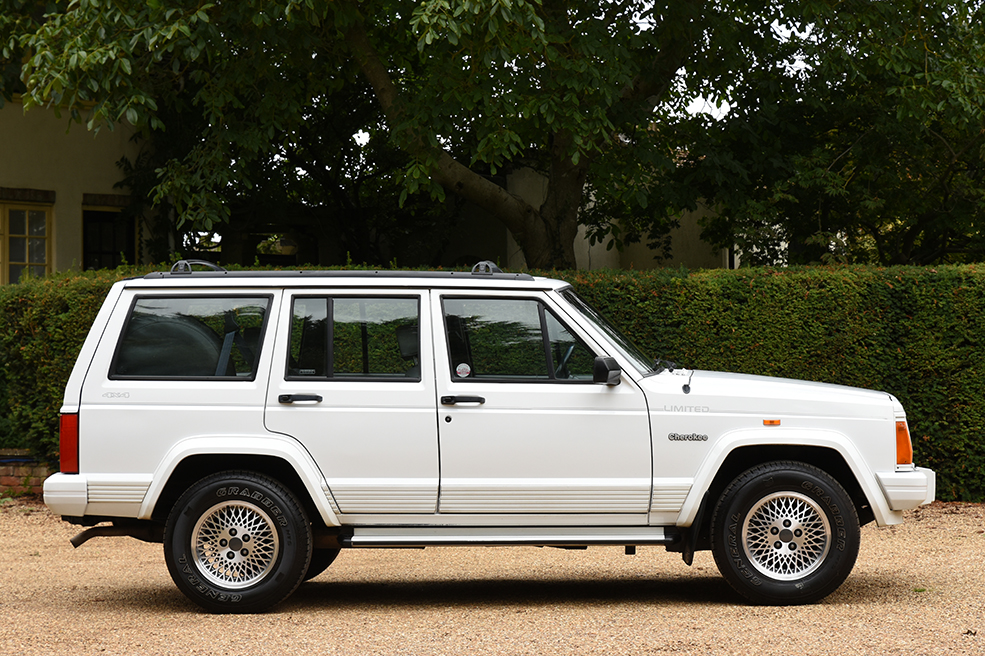
Running gear
There are a good few choices when it comes to gearbox and transfer case options for both models. The Cherokee is generally available today with either the manual gearbox or optional automatic, while the Grand Cherokees tend to be automatic. Almost all Grand Cherokees with manual gearboxes you’ll find are those with the VM diesel engine. Both gearboxes are strong and should only be paid the usual maintenance and wear checks.
When it comes to transfer boxes, things get more complicated. The Cherokee was available with two different types, known as – in Jeep lingo – Command-Trac and Selec-Trac. Command-Trac is a simple part-time system that features 4-high and 4-low modes through the NP231 transfer case that can only really be used on low-traction surfaces. This relatively basic system was available on the Grand Cherokee but was discontinued before the model officially reached the UK.
All 1996-on Grand Cherokees would have either featured the Selec-Trac or Quadra-Trac systems. Selec-Trac is similar to Command-Trac but provides the option of four-wheel-drive with an open central differential, allowing the use of four-wheel-drive on the road without transmission wind-up.
The Quadra-Trac system is more sophisticated in that it employs a viscous-coupling central differential to actively lock up if excessive traction is lost, therefore acting as both an on-road and off-road full-time 4wd system.
Post-1995 models featured a positive central differential lock in 4-low mode to reduce response times. As usual, the more complex the system, the more vulnerable it is to failures, so be aware of misbehaviour on and off the road as much as possible. The Quadra-Trac system is very effective when working, but its complex shift linkages are susceptible to getting stuck and eventually damaged. Some owners resort to replacing it with the simpler systems.
The rest of the running gear is pretty strong, with most components robust enough to take plenty of abuse although any untoward noises and whines from driveshafts and differentials should be red flags. Any modified vehicles should be approached with extra caution, as these can add extra strain on components. Jeeps equipped with ABS, including all Grand Cherokees, are fitted with the slightly weaker D35 rear axle that can give up under the strain of large wheels and uprated driveshafts for example.
Before taking a test drive, try to get a thorough impression of the suspension, especially at the front. You’ll need to have a good understanding of its condition because if it doesn’t drive right then the suspension of a Cherokee or Grand Cherokee can be a frustratingly time-consuming thing to fix. There shouldn’t be any excessive bounce or skittishness, and progress should be pretty smooth, even round bumpy corners. Remember that this car was class-leading in its on-road performance.
If the steering is vague then this could suggest a worn steering stabiliser, which are reasonably affordable to obtain or even upgrade. Worn anti-roll bars can be behind off-putting sensations of axle-tramp on acceleration, although worn bushes and dampers can disguise almost any accurate pin-pointing of such issues.
If the whole front end feels off and vibrates at speed, something common enough to be given the name ‘death wobble’ in Jeep Cherokee circles, then factor in a through re-going over of the entire front suspension. Badly done lifts can also make an unstable front end and show that the owner doesn’t fully appreciate how to maintain the right geometry for these vehicles. Be careful not to fall into someone else’s suspension problems.
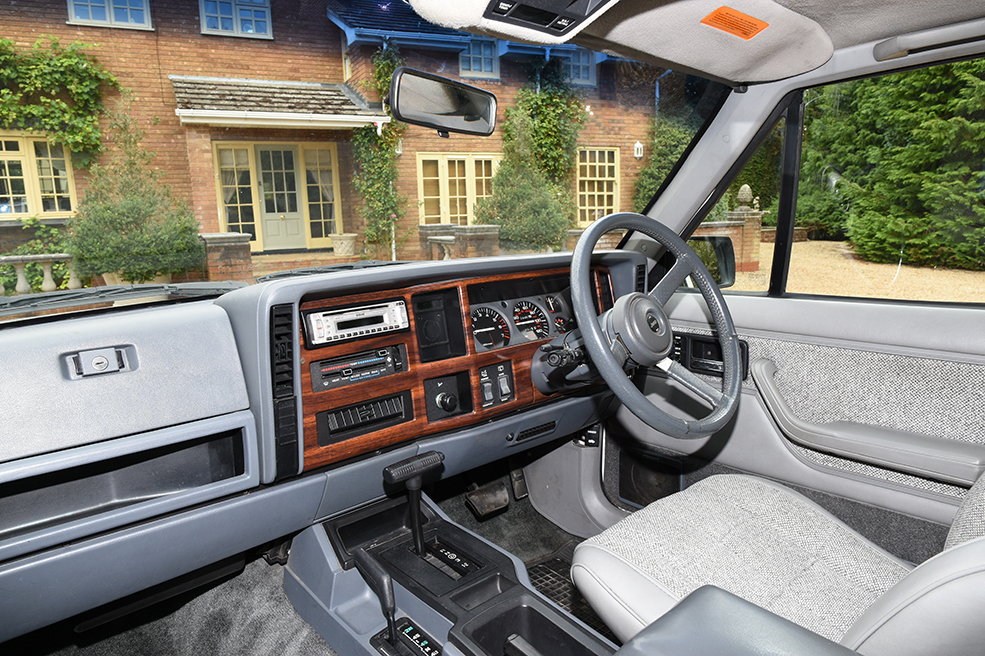
Electrics
The problem with ‘electric everything’ on a car that was great value when new is that they tend to break and the Jeep Cherokee range is, sadly, no exception. Central locking is the famous one, known to work intermittently or break completely with signs often first seen on the rear tailgate, while the factory fitted alarm can be temperamental, and speakers for the stereo have also been known to give up.
Go around the interior and check that everything works, then check the dashboard for any warning errors. If there are none, wipe your eyes, because there should be. Many are false readings but check them anyway. Common ones include coolant sensor bad, rear lamp failure, and service 4wd switch. Plus, if the radio aerial doesn’t work, be prepared for a surprisingly awkward task that will involve your head in the passenger-side footwell.
Upgrades
There is no shortage of things you can do to your Jeep Cherokee or Grand Cherokee to improve its capabilities, especially off-road, but if you want somewhere to start then there are a few established recipes with which you can’t go too wrong.
The established wisdom is that if you’re looking to go serious green-laning, then you’ll want a suspension lift. A 2” lift is about right and accommodates 30” Goodyear tyres without the dreaded consequence of wheel-arch rubbing. It’s important to combine these two with an uprated steering stabiliser designed to compensate and be aware that any previously subtle front suspension wear will quickly become more obvious on a lifted Jeep.
Extra power is useful for the additional rolling weight of larger wheels and tyres, so the usual intake and exhaust upgrades are worth thinking about, or even going for a left-hand-drive only V8 model. Then there’s uprated brakes to think about, especially if you’re carrying extra weight for expeditions, and many also upgrade the rear anti-roll bar to improve stability. It’s also definitely worth installing a range of underbody protection, and a new front bumper from ARB for example will improve your approach angle as well as providing a good base for mounting various accessories.
No matter what you want for your Jeep, whether you keep it standard and let it gradually appreciate into a modern classic like the older Grand Wagoneers are doing, or modify it into a more affordable Land Rover challenger, the Cherokee and Grand Cherokee range is still a great value talent.
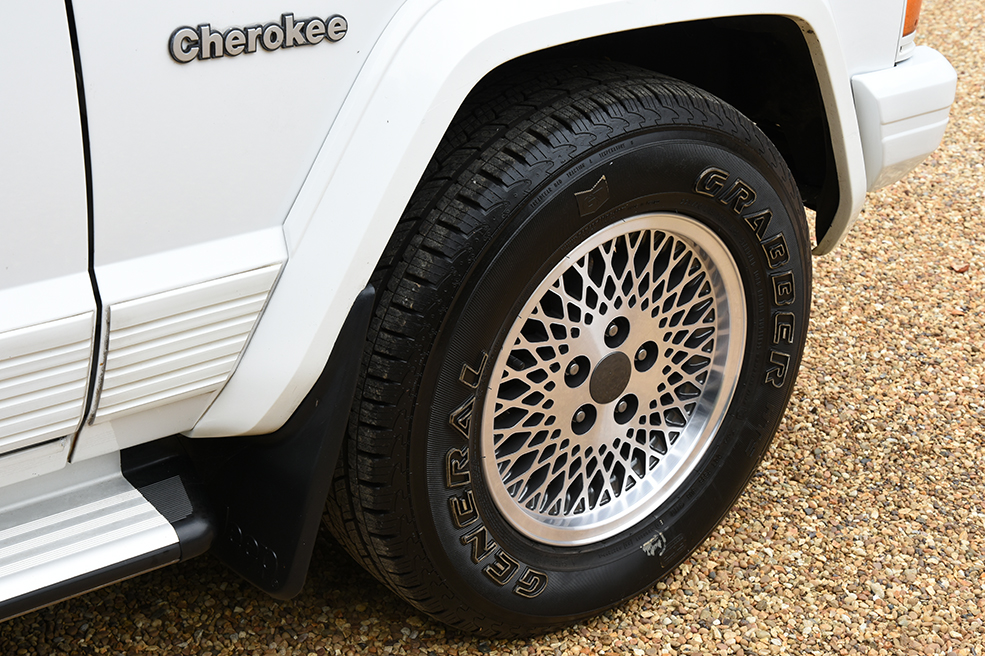
Jeep Cherokee: our verdict
There’s plenty to like about the Jeep Cherokee: its handsome in a boxy way, practical, pleasant to drive on the road and very capable off it. As an alternative to a modern classic estate car, the Cherokee makes a lot of sense.
If you like the idea of a genuine off-roader without the inflated costs associated with classic Land Rover ownership, it’s very easy to recommend the American alternative.

